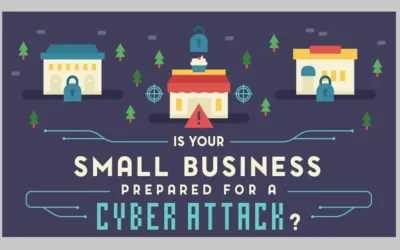Cybersecurity threats are activities intended to compromise the security of an information system by altering the availability , integrity , or confidentiality of a system or the information it contains, or to disrupt digital life in general. The cyber threat environment is the online space where cyber threat actors conduct malicious cyber threat activity. It includes the networks, devices, and processes that are connected to the Internet and can be targeted by cyber threat actors, as well as the methods threat actors use to target those systems.
In an increasingly interconnected world, cybersecurity has become a critical concern for individuals and organizations alike. The digital landscape is rife with threats that can compromise sensitive data, personal privacy, and financial security. In this blog post, we’ll dive into some of the most common cybersecurity threats you should be aware of and provide practical guidance on how to protect yourself.
Phishing attacks are one of the most prevalent and insidious cybersecurity threats. These attacks typically involve cybercriminals impersonating trusted entities, such as banks or well-known companies, to trick individuals into divulging sensitive information like login credentials, credit card numbers, or Social Security numbers. Below are some of the most important threats you need to be aware of.
Phishing Attacks Cybersecurity Threats
How to Protect Yourself:
- Be cautious of unsolicited emails and messages.
- Verify the authenticity of the sender.
- Avoid clicking on suspicious links.
- Educate yourself and your team about phishing techniques.
Ransomware Attacks
Ransomware is a type of malware that encrypts a victim’s files and demands a ransom for the decryption key. It can lead to data loss, financial damage, and operational disruptions.
How to Protect Yourself:
- Regularly back up your data.
- Keep your operating system and software updated.
- Use reputable antivirus and antimalware software.
- Educate employees on the dangers of opening unknown email attachments.
Social Engineering
Social engineering attacks manipulate individuals into revealing confidential information. This can involve exploiting psychological tactics, trust, or impersonation. Attackers may impersonate trusted colleagues or even pose as technical support.
How to Protect Yourself:
- Verify the identity of the person or entity making requests.
- Be cautious about sharing sensitive information.
- Train employees on social engineering awareness.
- Implement multi-factor authentication (MFA) to add an extra layer of security.
Malware
Malware is a broad category that includes various types of malicious software, such as viruses, Trojans, and spyware. These programs can infect your devices, steal information, or disrupt normal operations.
How to Protect Yourself:
- Use reputable antivirus software.
- Regularly update your operating system and applications.
- Be cautious when downloading files or software from unverified sources.
- Educate users on the risks of downloading and installing software from untrusted sites.
Insider Threats
Insider threats come from within an organization. These can be malicious or unintentional and may involve employees, contractors, or partners who have access to sensitive data.
How to Protect Yourself:
- Implement access controls and monitor user activity.
- Conduct regular security training and awareness programs.
- Encourage employees to report suspicious activities.
- Utilize Data Loss Prevention (DLP) tools to detect and prevent unauthorized data transfers.
Denial of Service Attack
Distributed Denial of Service (DDoS) attacks overload a website or online service with traffic, making it unavailable to users. This can lead to downtime and lost revenue.
How to Protect Yourself:
- Use a DDoS mitigation service.
- Monitor network traffic for anomalies.
- Implement load balancing and redundancy.
- Develop an incident response plan.
Zero-Day Exploits
Zero-day exploits are vulnerabilities in software or hardware that are unknown to the vendor. Cybercriminals discover and exploit these vulnerabilities before a fix or patch is available.
How to Protect Yourself:
- Keep software and firmware updated.
- Use intrusion detection systems.
- Employ network segmentation to limit exposure.
- Partner with vendors that actively address security concerns.
Sophistication

Cyber threat sophistication refers to the level of complexity, innovation, and advanced techniques employed by malicious actors in the digital realm. As technology evolves, so do the tactics, techniques, and procedures (TTPs) used by cybercriminals to compromise systems, steal data, and disrupt operations. Several key aspects characterize the sophistication of cyber threats:
- Advanced Techniques: Sophisticated cyber threats often involve cutting-edge techniques, including the use of advanced malware, zero-day exploits, and evasion tactics that can bypass traditional security measures.
- Targeted Attacks: Rather than indiscriminate attacks, sophisticated threats are often targeted and tailored to specific organizations or individuals. This involves extensive reconnaissance to gather information about the target.
- Evasion and Stealth: Advanced threats aim to avoid detection by security systems. This involves employing stealthy tactics, encryption, anti-analysis mechanisms, and other evasion techniques to remain undetected for as long as possible.
- Social Engineering: Cybercriminals increasingly leverage social engineering tactics to manipulate individuals into divulging sensitive information or performing actions that facilitate a cyber attack. This may involve highly convincing phishing emails, impersonation, or manipulation through social media.
- Nation-State Involvement: Some of the most sophisticated cyber threats are attributed to nation-state actors with significant resources and expertise. State-sponsored cyber attacks often have strategic objectives, such as espionage, disruption, or intellectual property theft.
- Use of Artificial Intelligence (AI) and Machine Learning (ML): Cyber threats are incorporating AI and ML to enhance their capabilities. This includes using AI for more targeted and adaptive attacks, as well as to automate certain stages of the cyber attack lifecycle.
- Supply Chain Attacks: Sophisticated threats may involve compromising the supply chain to target organizations indirectly. By infiltrating software vendors or service providers, attackers can gain access to a broader range of targets.
- Ransomware Sophistication: Ransomware attacks have become more sophisticated, with attackers using advanced encryption algorithms, evasion techniques, and even incorporating data exfiltration to increase the pressure on victims to pay the ransom.
- Persistent Threats: Rather than launching a one-time attack, sophisticated threats often involve persistent campaigns where attackers maintain a presence within a network for an extended period. This allows for ongoing data theft, espionage, or further malicious activities.
- Adaptability: Advanced threats are adaptive, evolving their strategies in response to changes in security measures. This adaptability makes them challenging to predict and defend against.
- Collaboration and Underground Markets: Cybercriminals often collaborate, sharing tools, techniques, and intelligence in underground forums. This collaboration contributes to the overall sophistication of cyber threats.
To counter increasingly sophisticated cyber threats, organizations need robust cybersecurity strategies that include threat intelligence, continuous monitoring, employee training, and the adoption of advanced security technologies. Regular updates and improvements to security postures are crucial to staying ahead of the evolving threat landscape.
Conclusion
In conclusion, cybersecurity threats are ever-present, and understanding them is the first step in protecting yourself and your organization. By staying informed, implementing security best practices, and fostering a cybersecurity-aware culture, you can significantly reduce the risk of falling victim to these common threats. Stay vigilant, and remember that cybersecurity is an ongoing commitment to safeguarding your digital assets and data.





